- Clone
- HTA125 (See other available formats)
- Regulatory Status
- RUO
- Workshop
- HCDM listed
- Other Names
- Toll-like Receptor 4, TLR4, TLR-4, CD284
- Isotype
- Mouse IgG2a, κ
- Ave. Rating
- Submit a Review
- Product Citations
- publications

-

Human peripheral blood monocytes stained with HTA125 PE
| Cat # | Size | Price | Quantity Check Availability | Save | ||
|---|---|---|---|---|---|---|
| 312805 | 25 tests | 98€ | ||||
| 312806 | 100 tests | 220€ | ||||
Toll-like receptors are type I transmembrane signaling receptors. They are primordial pathogen-recognition proteins that function as sentinels for the innate immune system. TLR4, also known as CD284, is a 110 kD protein which is expressed on monocytes/macrophages, endothelial cells, and at low levels on B cells and granulocytes. In association with a secretory molecule, MD2, TLR4 has been recognized as critical for host recognition of bacterial LPS. HTA125 antibody is useful for flow cytometric analysis and is able to block LPS-induced cytokine production.
Product DetailsProduct Details
- Verified Reactivity
- Human
- Reported Reactivity
- Guinea Pig
- Antibody Type
- Monoclonal
- Host Species
- Mouse
- Immunogen
- Ba/F3 cell line expressing human TLR4
- Formulation
- Phosphate-buffered solution, pH 7.2, containing 0.09% sodium azide and BSA (origin USA)
- Preparation
- The antibody was purified by affinity chromatography, and conjugated with PE under optimal conditions.
- Concentration
- Lot-specific (to obtain lot-specific concentration and expiration, please enter the lot number in our Certificate of Analysis online tool.)
- Storage & Handling
- The antibody solution should be stored undiluted between 2°C and 8°C, and protected from prolonged exposure to light. Do not freeze.
- Application
-
FC - Quality tested
- Recommended Usage
-
Each lot of this antibody is quality control tested by immunofluorescent staining with flow cytometric analysis. For flow cytometric staining, the suggested use of this reagent is 5 µl per million cells in 100 µl staining volume or 5 µl per 100 µl of whole blood.
- Excitation Laser
-
Blue Laser (488 nm)
Green Laser (532 nm)/Yellow-Green Laser (561 nm)
- Application Notes
-
Additional reported applications (for the relevant formats) include: immunohistochemical staining of acetone-fixed frozen sections4, immunofluorescence microscopy6, Western blotting10, and in vitro blocking of LPS-induced cytokine production2,3,7,9. This clone was tested in-house and does not work on formalin fixed paraffin-embedded (FFPE) tissue. For most successful immunofluorescent staining results, it may be important to maximize signal over background by using a relatively bright fluorochrome-antibody conjugate (Cat. No. 312806) or by using a high sensitivity, three-layer staining technique (e.g., including a biotinylated antibody (Cat. No. 312804) or biotinylated anti-mouse IgG second step (Cat. No. 405303), followed by SAv-PE (Cat. No. 405204). The Ultra-LEAF™ purified antibody (Endotoxin < 0.01 EU/µg, Azide-Free, 0.2 µm filtered) is recommended for functional assays (Cat. No. 312813 & 312814).
- Application References
-
- Skimazu R, et al. 1999. J. Exp. Med. 189:1777.
- Wang R, et al. 2003. Hybrid Hybridomics 22:357. (Block)
- Wang JE, et al. 2001. Infect. Immun. 69:2402. (Block)
- Ishihara S, et al. 2004 J. Immunol. 173:1406. (IHC)
- Kawahara T, et al. 2001 Infect. Immun. 69:4382.
- Jiang Q, et al. 2000. J. Immunol. 165:3541. (IF)
- Sugawara S, et al. 2001. Infect. Immun. 69:4951. (Block)
- Chavakis E, et al. 2007. Circ. Res. 100:204. PubMed
- Bhattacharyya S, et al. 2007. Am. J. Physiol. Gastrointest Liver Physiol. doi:10.1152/ajpgi.00149. (Block) PubMed
- Baumgarten G, et al. 2001. J. Infectious. Dis. 183:1617.
- Product Citations
-
- RRID
-
AB_2205002 (BioLegend Cat. No. 312805)
AB_2205002 (BioLegend Cat. No. 312806)
Antigen Details
- Structure
- Type I transmembrane protein, Toll-like receptor family/IL-1R superfamily, 110 kD
- Distribution
-
Monocytes/macrophages, endothelial cells, B cells and granulocytes
- Function
- Activates the innate immune system against Gram-negative bacterial pathogens by recognition of LPS
- Ligand/Receptor
- Bacterial LPS
- Cell Type
- B cells, Endothelial cells, Granulocytes, Macrophages, Monocytes, Tregs
- Biology Area
- Cell Biology, Immunology, Innate Immunity, Neuroinflammation, Neuroscience, Neuroscience Cell Markers
- Molecular Family
- CD Molecules, Toll Like Receptors
- Antigen References
-
1. Skimazu R, et al. 1999. J. Exp. Med. 189:1777.
- Gene ID
- 7099 View all products for this Gene ID
- UniProt
- View information about CD284 on UniProt.org
Related FAQs
- What type of PE do you use in your conjugates?
- We use R-PE in our conjugates.
Other Formats
View All CD284 Reagents Request Custom Conjugation| Description | Clone | Applications |
|---|---|---|
| Purified anti-human CD284 (TLR4) | HTA125 | FC,IHC-F,ICC,WB,Block |
| Biotin anti-human CD284 (TLR4) | HTA125 | FC |
| PE anti-human CD284 (TLR4) | HTA125 | FC |
| Brilliant Violet 421™ anti-human CD284 (TLR4) | HTA125 | FC |
| Ultra-LEAF™ Purified anti-human CD284 (TLR4) | HTA125 | FC,IHC-F,ICC,WB,Block |
| APC anti-human CD284 (TLR4) | HTA125 | FC |
| Purified anti-human CD284 (TLR4) | HTA125 | FC, IHC, WB, IF, IP |
| TotalSeq™-A0405 anti-human CD284 (TLR4) | HTA125 | PG |
| TotalSeq™-C0405 anti-human CD284 (TLR4) | HTA125 | PG |
| TotalSeq™-B0405 anti-human CD284 (TLR4) Antibody | HTA125 | PG |
Customers Also Purchased
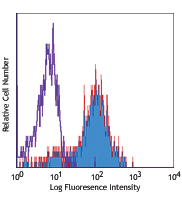
Compare Data Across All Formats
This data display is provided for general comparisons between formats.
Your actual data may vary due to variations in samples, target cells, instruments and their settings, staining conditions, and other factors.
If you need assistance with selecting the best format contact our expert technical support team.
-
Purified anti-human CD284 (TLR4)
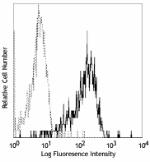
Human peripheral blood monocytes stained with HTA125 PE -
Biotin anti-human CD284 (TLR4)

Human peripheral blood monocytes stained with biotinylated H... -
PE anti-human CD284 (TLR4)
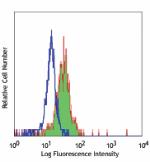
Human peripheral blood monocytes stained with HTA125 PE -
Brilliant Violet 421™ anti-human CD284 (TLR4)
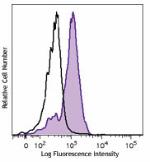
Human peripheral blood monocytes were stained with CD284 (cl... -
Ultra-LEAF™ Purified anti-human CD284 (TLR4)

Human peripheral blood monocytes stained with HTA125 PE. -
APC anti-human CD284 (TLR4)

Human peripheral blood monocytes were stained with CD284 (cl... -
Purified anti-human CD284 (TLR4)
-
TotalSeq™-A0405 anti-human CD284 (TLR4)
-
TotalSeq™-C0405 anti-human CD284 (TLR4)
-
TotalSeq™-B0405 anti-human CD284 (TLR4) Antibody
 Login / Register
Login / Register 










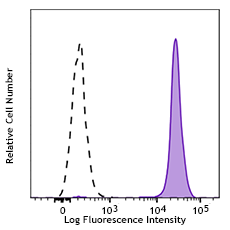
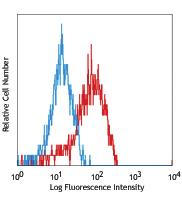
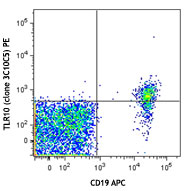



Follow Us